This Florida Town Rode a Rail Trail to an Economic Revival
It’s a balmy Saturday evening in Winter Garden, Florida. Smiling couples hold hands on swinging benches beneath a wisteria-covered gazebo. Throngs of residents and visitors line up for ice cream from a storefront window along a historic main street. Young families congregate in a splash park teeming with squealing children. Downtown is positively humming.
Flash back 30 years. Plant Street (the city’s main commercial street) was “boarded up, filled with industrial uses and used car lots,” says Tanja Gerhartz, Winter Garden’s economic development director. An old train track sprouted grass in the center median.
At one time, it was one of the busiest shipping hubs in Florida for citrus heading north, with two train stations (both still intact and open to visitors) to accommodate all the demand. But like many of the citrus towns of central Florida, Winter Garden lost its primary industry in the 1970s and 80s, when a series of freezes drove citrus growers farther south. Compounding the decline, this era also corresponded to the growth of malls and regional shopping centers, which led to downtown disinvestment across North America.


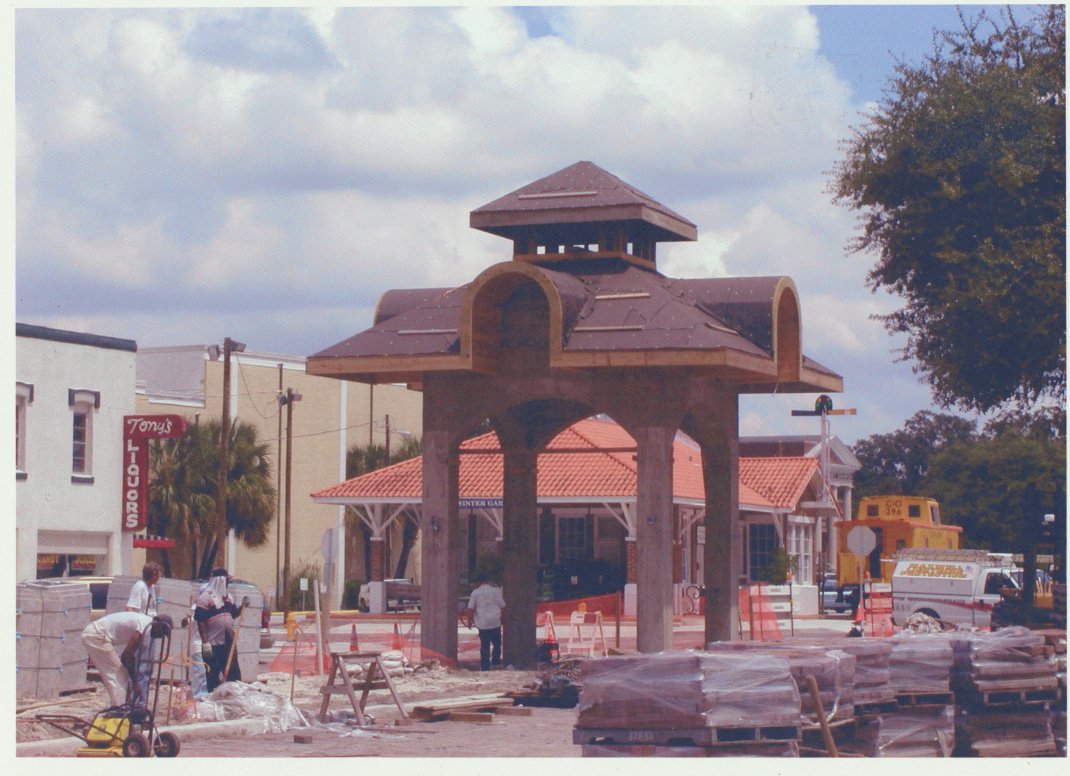

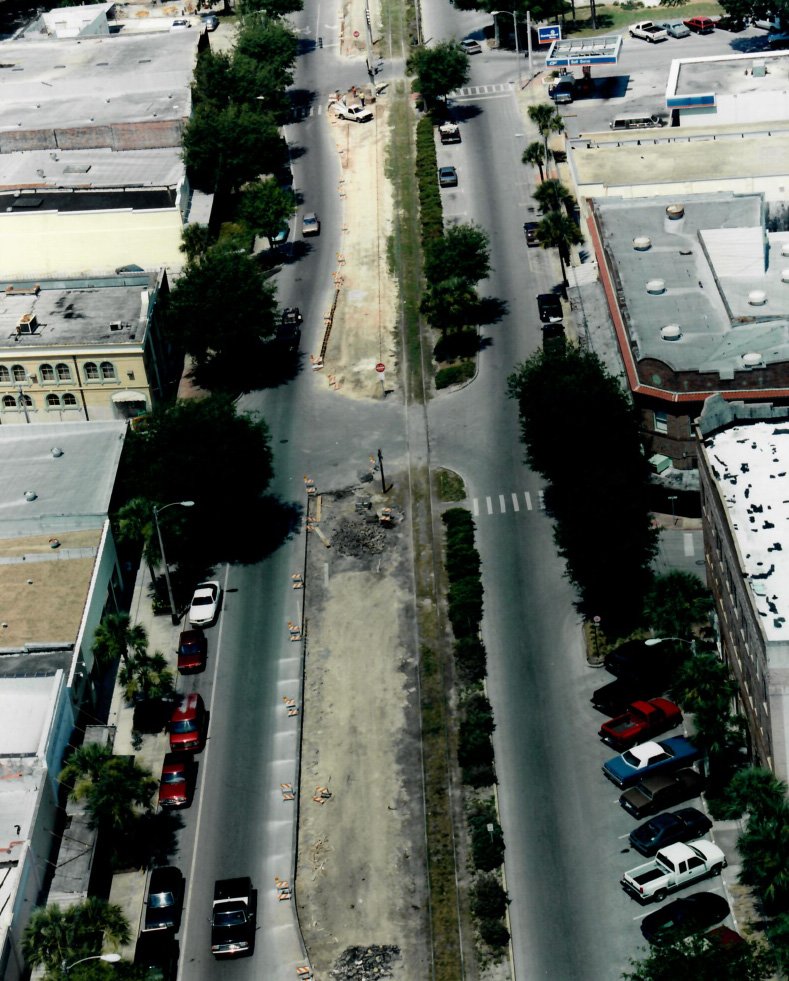
Elected officials (local and county), community leaders, and local stakeholders knew they needed to take action to revive their declining city. They decided to make two important bets: on the prospects of connecting Winter Garden with a new regional rail trail, and on the historic character of the town being an important part of its revival. To this they added a seemingly straightforward goal, but one that would prove transformational: bring people back downtown.
Winter Garden received Main Street Designation from the state of Florida in 1991, which provided grants and expertise to help revitalize downtown. It established its own Community Redevelopment Area (CRA) in 1992 for access to funding for infrastructure improvements. In the intervening time, it also fought off a state-led plan to make Plant Street a five-lane road.
Few towns at the time gave prime real estate to bicycling infrastructure, but Winter Garden made the locally controversial decision to route the West Orange Trail directly through the middle of downtown. Plant Street was reconfigured with the trail running through a large center median (which would become the base for several civic projects to come).
That decision “provided the one thing that the city needed at that time, which was people and foot traffic and life,” says Kelly Carson, Winter Garden’s planning director. The West Orange Trail through downtown “was the story of how the city came alive again,” says Carson. Gerhartz concurs, calling it “a trail of life for our downtown.”
Jason King, a principal at Dover, Kohl & Partners, who has worked on several projects in Winter Garden, casts the decision about placing the trail in economic terms: “Cyclists buy more stuff because they’re moving more slowly through a place… They’re better customers.”
That certainly proved the case in Winter Garden. By 2010, the West Orange Trail had reached one million riders a year, and the segment through the heart of Plant Street is one of its main hubs and rallying points. In 2020, Winter Garden was awarded official Trail Town status from the state, given to communities with trails that provide “accessibility, amenities, safety, signage, and proximity to businesses.”
The West Orange Trail is a 22.26-mile multi-use trail built along an old Florida railroad corridor. It was constructed and is managed by Orange Country and goes through the neighboring towns of Apopka and Oakland, ending at the county line where it connects to the South Lake Trail for another 10 miles of paved trail. The stretch around Winter Garden is particularly appealing, with shade-covered stretches going through historic neighborhoods and regional parks, while new construction is cropping up adjacent to the trail.
But the segment smack-dab in the middle of town is where the magic happens. The median on Plant Street is a parade of human power, with serious cyclists, slower-moving family groups, inline skaters, and casual walkers all sharing the trail. Leave your bike at one of several city-installed racks and you’ll find dozens of dining and shopping options just steps away.
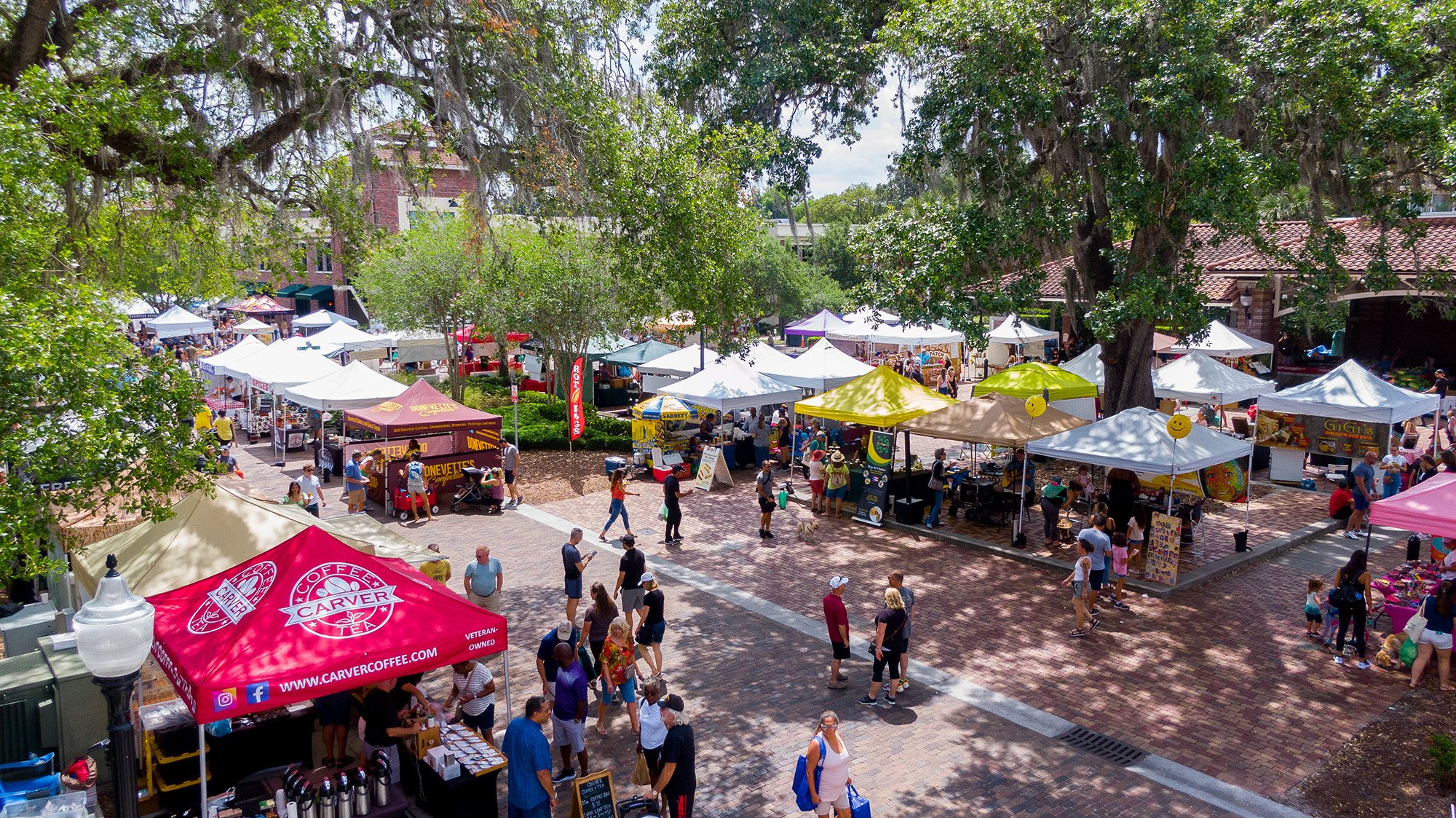
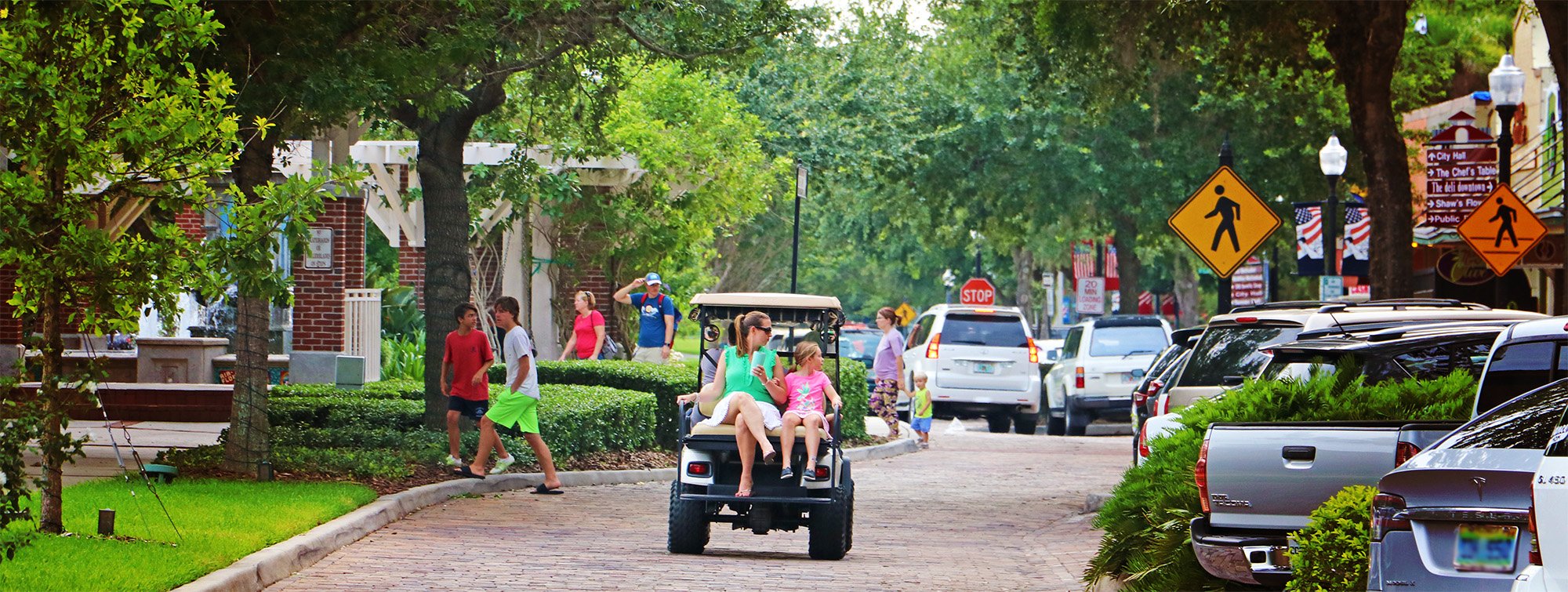
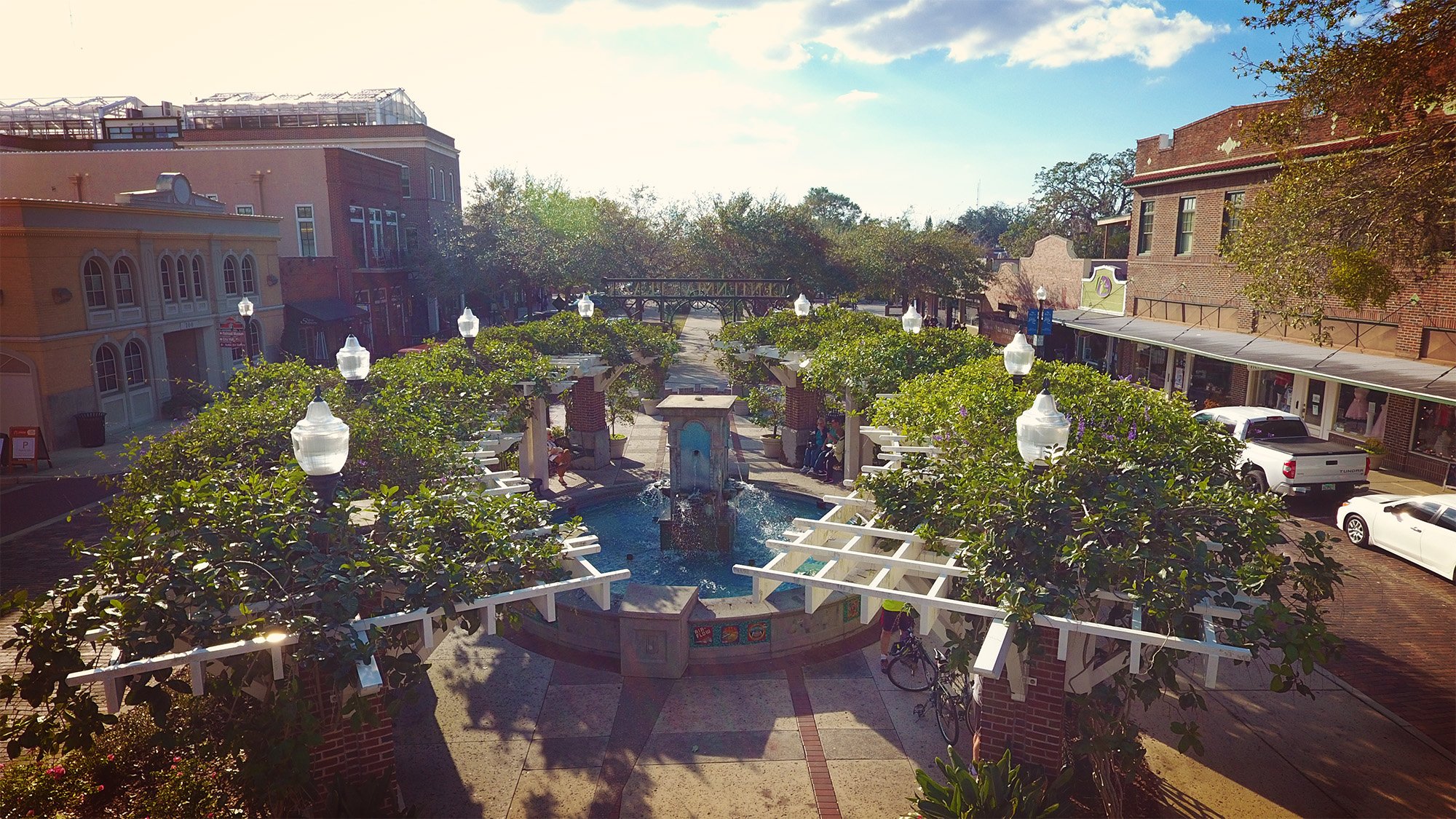
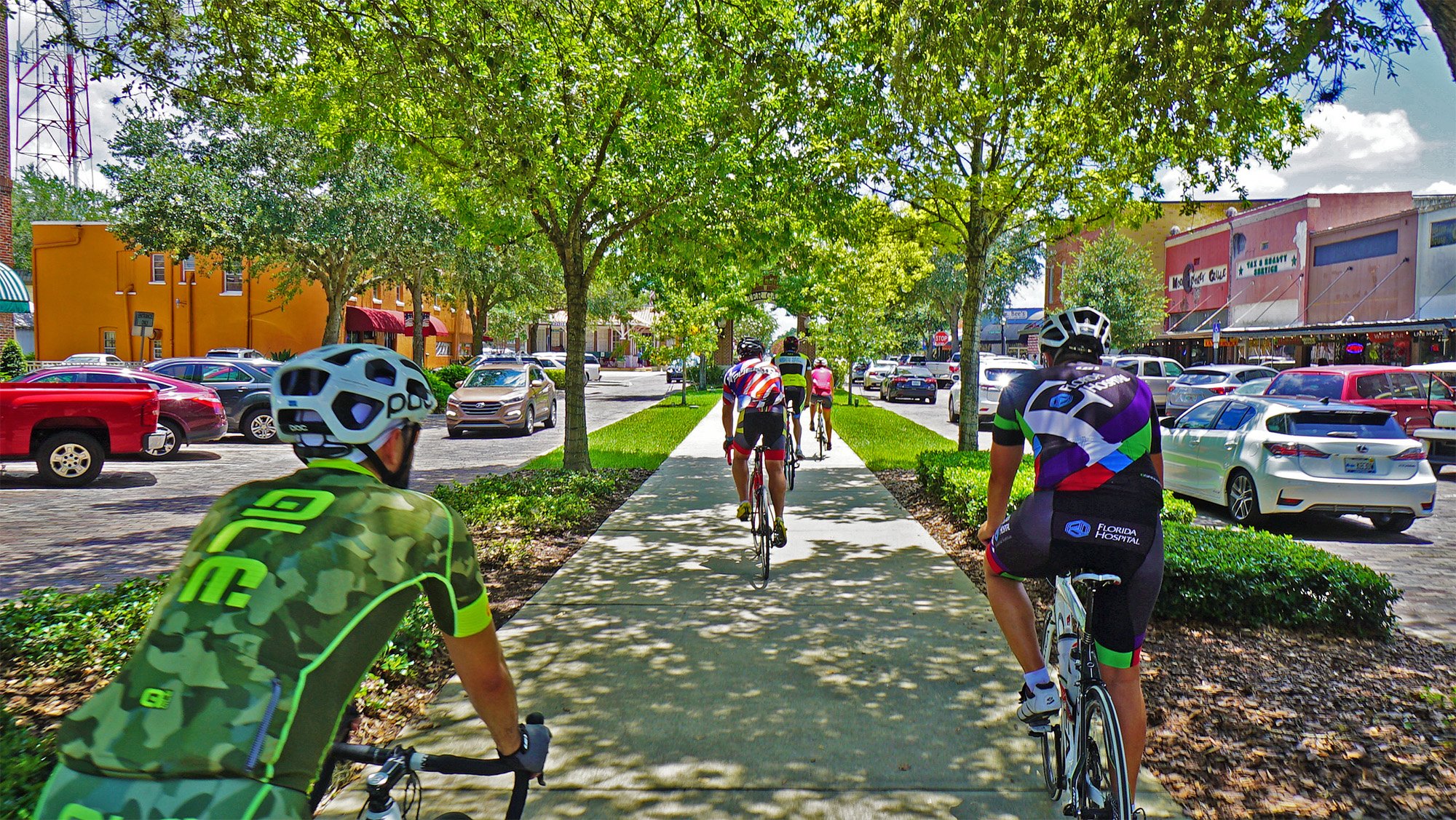
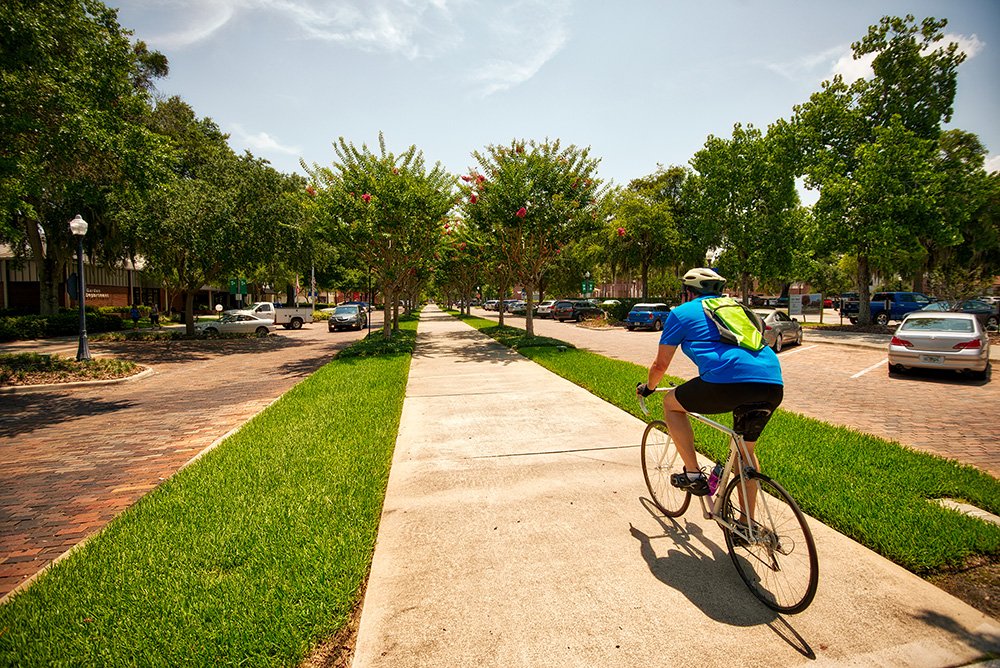
Post-trail, CRA records document a slate of new construction in Winter Garden that would make any city its size jealous. At the civic level, a striking Art Deco City Hall opened in 2008, a well-integrated downtown parking garage came in 2016, and a series of beautification projects added a pavilion, an interactive fountain, and a landscape of linear parks that transformed downtown into what Carson calls a collection of “outdoor living rooms.”
Major commercial projects include the Plant Street Market and Crooked Can Brewing Company, a food hall styled like a vintage mercantile warehouse that “looks like it’s been there 100 years,” says King; the restoration of the historic Garden Theatre; plus several new housing projects adjacent to downtown. As a result of all these changes, the CRA calculates the increase in property value at a whopping 187% between 2012 and 2022, while adding one million square feet to downtown.
There’s also a historic preservation success story in Winter Garden. The most immediate goal when the city’s Heritage Foundation was formed was to save the historic Edgewater Hotel as an anchor of Plant Street. Originally opened in 1927, the Edgewater is a classic American brick model from an era when hotels were integrated in cities and not clustered around highway exits. Winter Garden’s economic revival allowed the owners to renovate and reopen in 2003 after 37 moribund years. Today, the Historic Edgewater Hotel operates B&B style, with rooms decorated in period furniture and historical architectural features intact, including a vintage hand-operated elevator. (Disclosure: I’ve stayed there twice, and it’s a gem.) Ground-floor retail includes two restaurants and an ice cream shop.
In 2010, the city adopted a downtown design overlay to ensure new construction would fit with the historic character of Winter Garden. It had previously conducted a survey of historic buildings and established an architectural review and historic preservation board to enforce the new guidelines. Rather than impeding prospective development, Carson has found that “when new developers come in, they like Winter Garden, they like what we’re doing and where we’re heading as a city,” and are willing to work with city planners to accommodate its standards. As a visitor, you’d be hard pressed to pick out much of the newer construction integrated with downtown’s historic fabric.
Winter Garden is set to expand its pedestrian- and cycling-friendly standards from its core, overhauling a one-mile stretch that connects downtown to a major arterial. Dillard Street is currently two lanes each way with a center turn lane, and will be reconfigured to include one lane of traffic each way, an adjacent multi-use trail, wider sidewalks, and reengineered intersections.
It is also extending the trail to connect to East Winter Garden, a neighborhood that has historically seen less investment, in the hopes of replicating some of the economic success of the trail segments downtown.
Building an economic plan around rail trails has “become a proven strategy to revive places and make towns stronger,” says King.
Lessons from the West Orange Trail have informed his firm’s work elsewhere in the U.S. He’s currently working on rail-trail projects in Abita Springs, Louisiana (Tammany Trace Trail), and Bristol, Rhode Island (East Bay Trail), using economic projections based partially on Winter Garden’s success.
King describes the process, “We look at these bike trails the same way we would look at any road segment. We look at the number of trips on the trail, the average daily trips, and from that you can get an idea of how much retail or restaurants the place will support.”
Meanwhile, Winter Garden has experienced a complete pendulum swing. As its original CRA sunsets in 2023, the city is grappling not with promoting growth, but managing it. Winter Garden’s population more than tripled from the 2000 census (14,351) to 2020 (46,964), and with increased interest from metropolitan Orlando buyers, plus the out-of-state migration that all Florida communities are grappling with, it’s working to accommodate many new residents.
“We’re trying our best to balance all these pressures,” says Carson. She says the city will continue to put development requests through a simple filter: “Does this project help establish and maintain Winter Garden as a beautiful, vibrant, and charming city that is beloved by its residents?”





Linda Appel Lipsius is the executive director of Denver Urban Gardens, a network of community gardens that produce 650,000 pounds of food annually. She discusses the benefits of community gardens and how a permaculture design philosophy can make cities resilient.